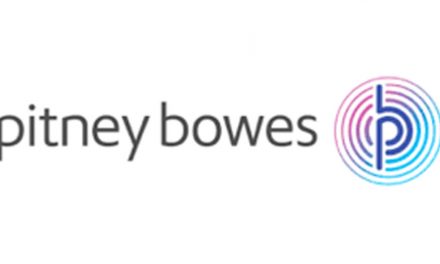
Let’s get digital

Clive Stringer, Business Development Director for Pitney Bowes, looks at how mailrooms are cutting through complexity to create impact. Think ‘mailroom’ and for many, a room filled with machines and towers of brown paper envelopes springs to mind. But mailrooms across the world have undergone a major change, and are transforming into the physical and digital hub of an organisation’s communications.
Public and private sector organisations alike are looking to reduce costs, increase revenues, and improve the service they offer. Smart, effective communication is the thread that binds together these strategic objectives: timely, accurate communication delights customers, creates loyalty and drives revenue.
The type of communication generated varies from business to business. For some organisations such as government agencies, utility firms, banks or mobile phone companies, high volume outbound physical communications are the bedrock of their business. This isn’t just down to a requirement to comply with regulations but also a response to customer preference: research from Two Sides found that 83% of respondents stated a clear preference for reading print on paper for complicated documents, and almost 50% want a paper bill for their financial services; 40% for utility services and 36% for landline phone services1. Conversely, other organisations know some of their customers like digital communication, a preference which varies according to the nature of the business and the message being shared.
As well as this constant stream of digital and physical outgoing mail, high volumes of inbound mail and seasonal fluctuations add further pressure on already-stretched management and operations departments. Within this complex landscape, operations and mailroom managers are therefore looking at bringing in streamlined, effective communications management to improve accuracy and drive customer engagement. This is where digital mailrooms come into play, enabling precise, streamlined management of physical and digital mail.
The digital mailroom refers to the automation of inbound mail, using intelligent document creation and processing techniques aligned with document scanning, document capture, franking technology and more. Organisations can digitise mail and automate indexation, classification and distribution. Paper and electronic mail can then be securely managed through the same processes, enabling a comprehensive audit trail.
Organisations using digital mailrooms notice:
- Improved collaboration, arising from the ability to access consistent, precise and accurate information across a universal platforms
- Real-time access to tracking information, as users receive immediate notification of a document’s arrival at the company; employees can access information immediately regardless of where the documents are located
- Greater control over mail management due to the ability to track and trace items within CRM and EDM systems
- Improved efficiencies and reduced operating costs, with savings made from access to greater mail intelligence – eliminating duplication for example – and the removal of network or cabinet storage
Although traditionally an expression used to refer to the automation of incoming mail, the scope of the digital mailroom is becoming extended to incorporate outbound mail, too, as powerful, scalable digital platforms are integrated across businesses to eliminate multiple systems and provide real-time visibility of costs and surcharges for outbound mail management. Some systems also have built-in address verification to guarantee accuracy and precision.
Digital mailrooms in practice
Digital mailrooms are being used to generate improvements and efficiencies in different ways across a variety of organisations, from local councils to multinational corporations. Some organisations are consolidating disparate high volume outbound mailing operations into a single, high performance communications hub, gaining greater control, visibility and management. Other organisations are transforming existing incoming mail operations to help prepare their business – and that of their clients – for growth.
Inbound mail
The University of Liverpool has a large international student population, receiving mail from around the globe. Each hall of residence receives three or four large bags of correspondence from the Royal Mail daily as well as parcels from international couriers. Previously, staff sorted post manually and notified the students that they have packages for pickup, using a whiteboard and paper book. The university decided to trial a new digital system in two halls of residence, and then across the campus. Now, SendSuite Arrival Inbound Package Tracking Software automates package handling for the University and ensures full accountability for parcels until they are picked up by students. Barcode readers, electronic signature capture, and tracking and reporting functions have brought postal operations into the digital age to meet the expectations of today’s students.
Inbound and Outbound mail
Linda’s Stuff is an online fashion business with hundreds of thousands of suppliers and customers throughout the world. A consignment business, the organisation needed to optimise business performance, and customer service and management costs. Suppliers and buyers needed complete visibility into the status of consigned goods and real-time order shipment tracking. Linda’s Stuff addressed this by implementing global logistics platform SendSuite Live, which has automated the entire outbound shipping process for Linda’s Stuff, accelerating order-to-delivery and boosting worker productivity and morale. It has also applied business rules and “rate-shops” to select the right shipping option for every package. Another smart mailing platform provides real-time visibility into the status of each consigned or received item, improving the company’s inbound package handling, inventory management and warehousing.
As a result, Linda’s Stuff has increased its daily shipments by 50 percent, without adding shipping team headcount, and it can scale to accommodate even more business. The company reduced total freight costs as volume skyrocketed, while the shipping team handles higher volume more efficiently — lowering annual overtime from $50,000 to zero. Finally, the company has maintained its eBay “Top Rated Seller” status by continuing to ship within a 24-hour window.
1 Research carried out by Toluna for Two Sides 2015 as featured in Print Week











